Для работы проектов iXBT.com нужны файлы cookie и сервисы аналитики.
Продолжая посещать сайты проектов вы соглашаетесь с нашей
Политикой в отношении файлов cookie
Сегодня мы протестируем операционные системы Windows 10 и Arch Linux c графической оболочкой Gnome 3 на одинаковом железе в играх и бенчмарках и посмотрим, что из этого выйдет. Все системы полностью оригинальные. Тесты проходили по 3 прогона.
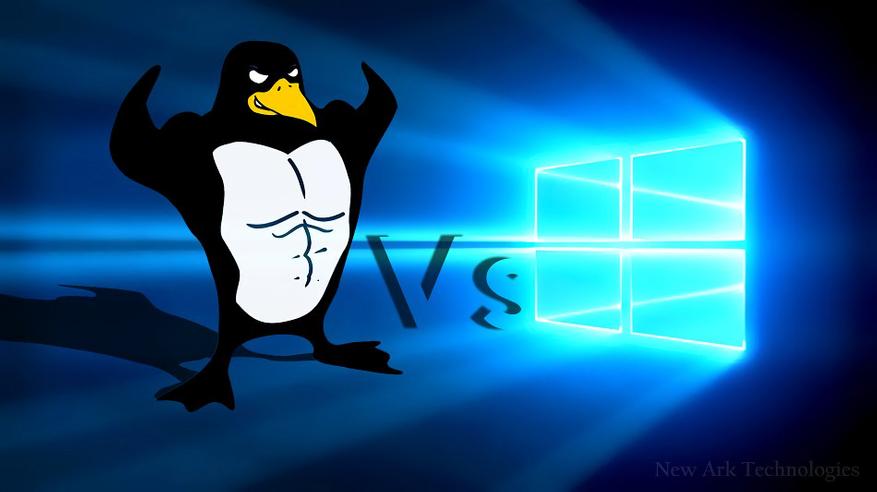
Тестовый пк
- Процессор: Intel Pentium G4560 2/4 3.5 Гигагерц
- Видеокарта: Nvidia Geforce 1050 2Gb
- Оперативная память: 2×4 2400
- Материнская плата: H110M-DGS R3.0 Bios 7.50
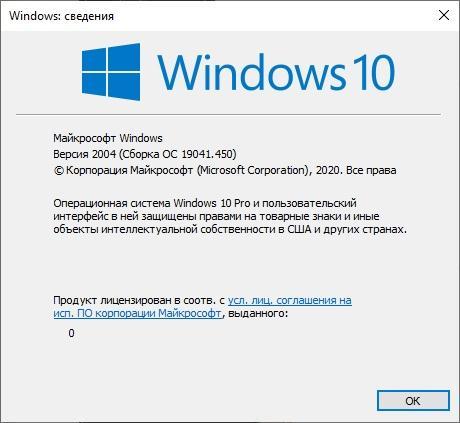
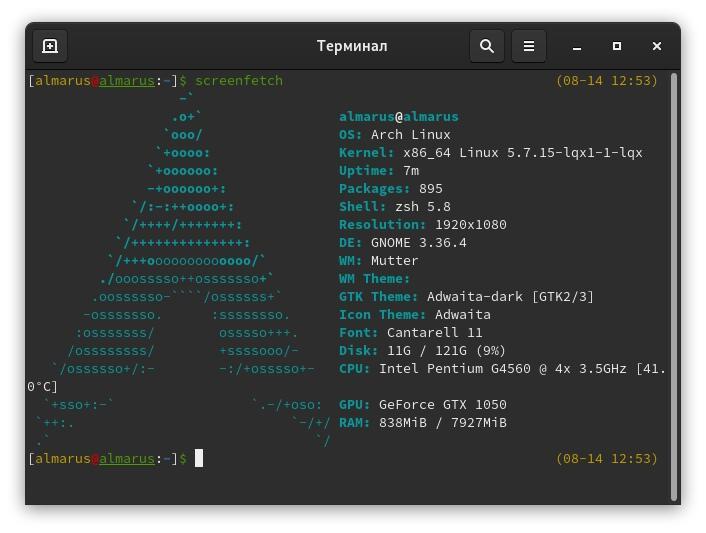
Сравнение систем по потреблению при старте
Windows — 115-146 процессов при пустом старте, 1.5 Гигабайта потребления, система и драйверы обновлены.
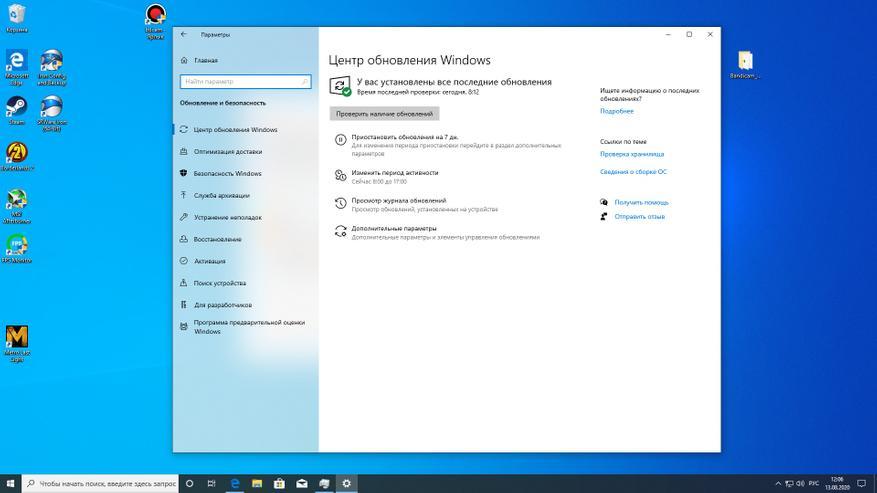

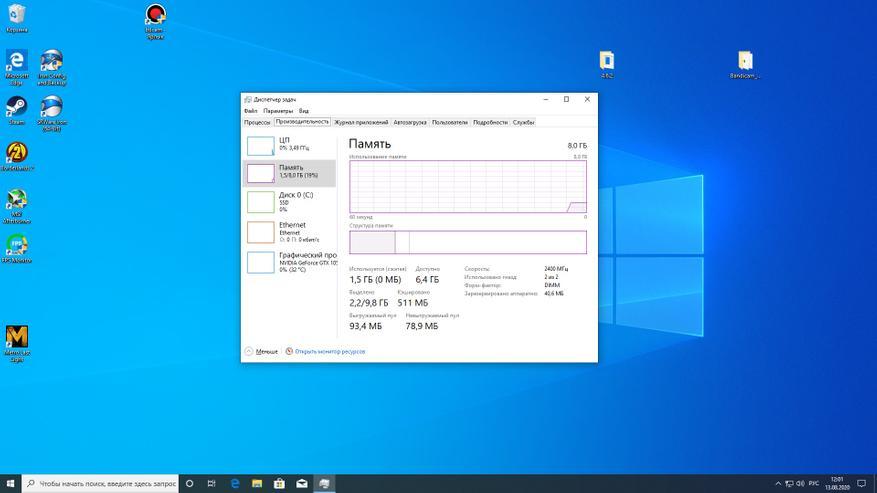
Archlinux — 56 процессов при пустом старте, 500 мегабайт потребления, система и драйверы обновлены.
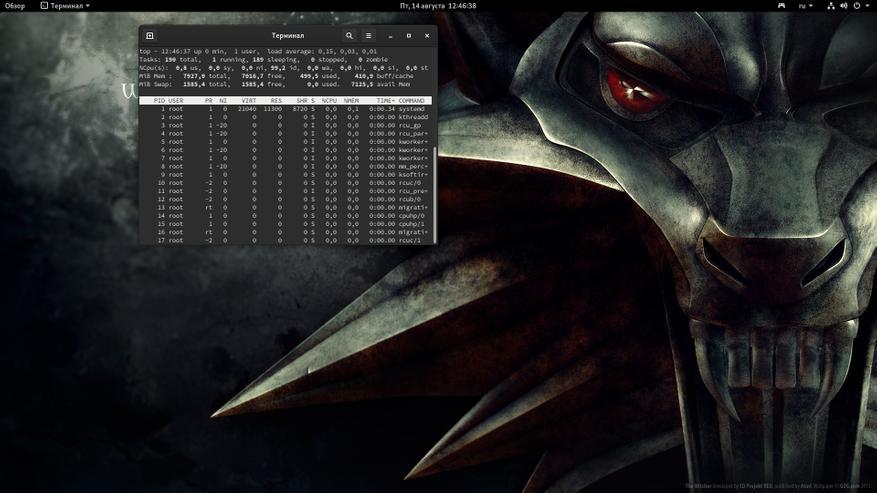

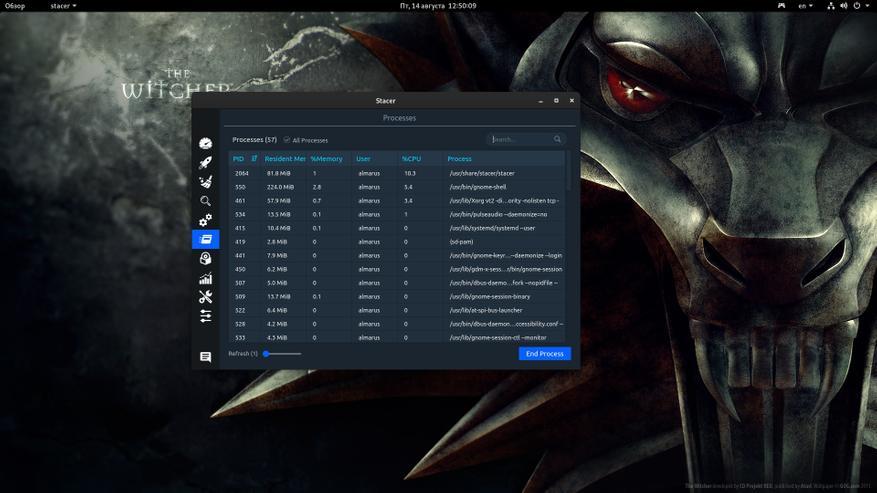
Для более честного сравнения для системы на основе Linux было выбрано тяжёлое графическое окружение (DE) Gnome 3, известное своими костылями. Но не стоит забывать о существовании оболочек, потребляющих менее 100 мегабайт оперативной памяти. Оптимизаций никаких не производилось кроме установки для Linux lqx ядра и фоновых служб zramswap и anonicy.
Средства записи и мониторинга
Для записи игр и тестов в Windows использовалась программа Bandicam с быстрым кодеком nvenc и контейнером mp4, что минимально (5-10%) влияют на потери, а такжеMSI Autoberner для мониторинга загруженности ресурсов.
Для записи игр и тестов в Linux использовалась программа SimpleScreenRecorder c аналогичным кодеком и контейнером для минимизации влияния средства записи и разницы, а также Mangohud для мониторинга загруженности ресурсов.
Программы простые и не требуют глубокого понимания или настройки. Игры выбирались с учётом встроенного бенчмарка и являются лицензиями.
Выводы делаю, напрямую сравнивая результаты бенчмарков на минимальных и максимальных параметрах графики с выводом графика времени кадра.
Синтетический тест
Синтетический тест Geekbench 5 оценивает производительность ЦП с работой в разных задачах — сжатие, распаковка, обработка, серф и прочее веселье.
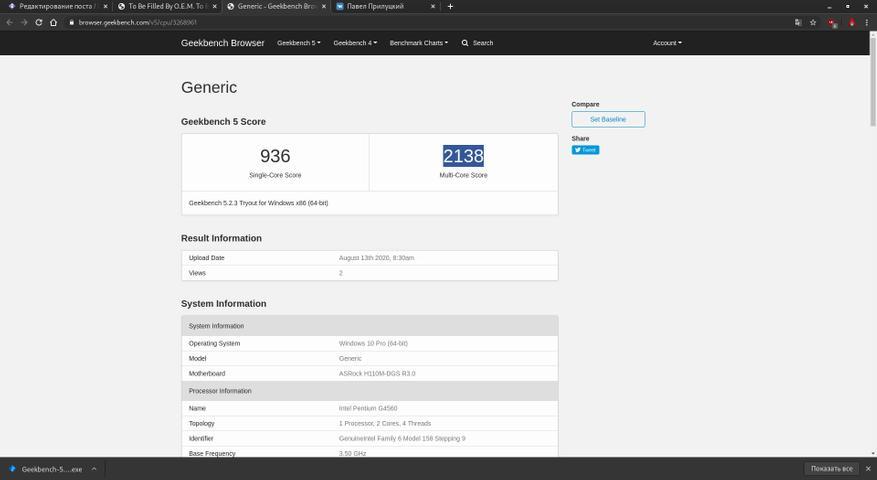
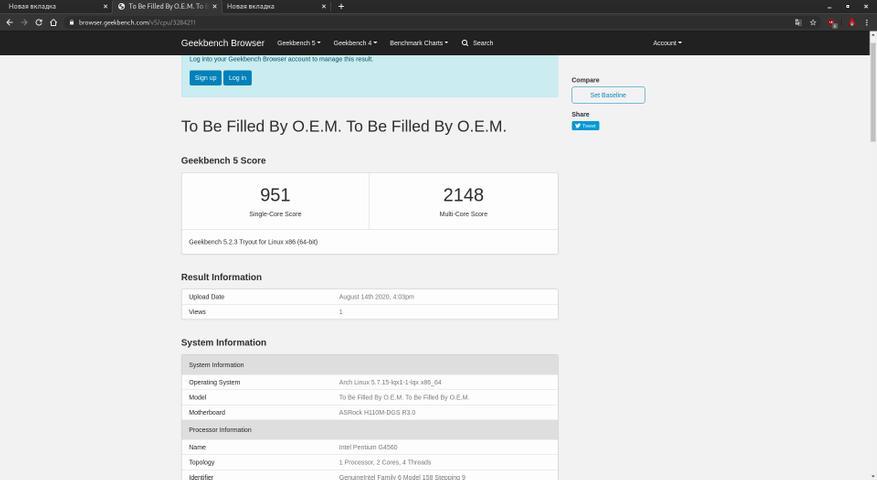
Никакого открытия для себя я не сделал. Давно известно, что планировщик работы с центральным процессором в системах на базе Linux реализован лучше.
Тестирование в играх
Открывает наше игровое противостояние прибежище всех раков и причина попадания в армию — Dota 2.
Тест для меня не показывает что-то новое. Отчётливо видно излишнее потребление оперативной и видеопамяти фоновыми процессами системы Windows. Преимущество Linux составляет от 5 до 20 кадров в зависимости от сцены, что нельзя свести на погрешность теста.
Тестирование на максимальных настройках успешно показывает, что разницы в FPS нет, но система Windows больше просаживается во время ожесточённых моментов до 22 FPS, а потребление оперативной памяти значительно возросло. Archlinux обеспечил плавность и играбельность в любых моментах.
Вторым героем теста становится улица моего детства — Counter-Strike: Source.
Минимальные настройки:
Сравнение не совсем честное, потому что тестирование идет на уровне разных графических API. Встроенный графический бенчмарк показывает преимущество DX9 над OpenGL, но на самой карте разница ровно противоположная — OpenGL рисует больше кадров.
Максимальные настройки:
Максимальные настройки графики показывают уверенное преимущество DX9 в плане максимального FPS, но странные подёргивания и ослепляющая желтизна на карте вызывают недоумение.
Третьей игрой для теста станет симулятор подростковых фантазий — Tomb Raider 2013.
Максимальные и минимальные настройки, а также сравнение с DXVK.
Интересные выводы можно сделать по данному ролику. Например, что OpenGL почти мёртв в плане соревновательной части с DX9-12, где идёт упор на максимальный FPS, а не удобство программирования или платформы.
Часть теста с упором в GPU подтверждает предыдущие тесты о преимуществе Dx11 в сравнении с OpenGL и проигрыше Windows-платформы по сравнению с Linux в плане работы с процессором. На это указывает преимущество в минимальном FPS и проигрыш в максимальном.
C OpenGL разобрались. А что, если противопоставить две Windows-версии игры, но одна из них будет запущена под Linux через обёртку DXVK? Результаты почти одинаковы! Мне удалось запустить Windows-версию игры под Linux. Она показывает схожую игровую производительность, а потребляет мой ПК при этом меньше ресурсов.
P.S. Опять этот странный эффект желтизны у DX — проблема DX?
Выводы
Современный Archlinux — это система, потребляющая меньше ресурсов ПК по сравнению с нынешней Windows. Это способствует лучшей производительности в играх с поддержкой Vulkan и равную производительность в проектах, запускающихся через обёртку DXVK. Если вы хотите считать, что ваш ПК — это только ваш ПК, не париться по поводу вечной слежки и всегда иметь всё самое свежее, то Linux — это ваш бро.
P.S. Автор знает и понимает, какие проблемы существуют c античитами, какие способы запуска игр и проблемы есть. Также автор напоминает, что тест производился без использования оптимизаторов и прочих ускоряющих вещей, что даёт надежду на ещё больший выигрыш в Linux.
Видеоверсия, если лень читать
Команда PCGH задалась вопросом, есть ли разница в производительности Windows 11 и Linux, когда речь заходит о современных играх. Чтобы ответить на него, был проведён эксперимент, в рамках которого вышеупомянутые операционные системы сравнили в 11 проектах.
Для тестов использовался персональный компьютер с процессором AMD Ryzen 5 5600X, видеокартой AMD Radeon RX 6800 XT, 16 ГБ оперативной памяти DDR4-3200, материнской платой MSI MPG B550 Gaming Plus и 2 ТБ на встроенном твердотельном накопителе. Тестировались системы Windows 11 Pro for Workstation и Nobara Linux 38 — обе установлены в режиме двойной загрузки.
Тестируемые игры:
- Diablo 4;
- God of War;
- Forza Horizon 5;
- World of Warcraft;
- Red Dead Redemption 2;
- Cyberpunk 2077 v2.0;
- Horizon Zero Dawn;
- Ghostwire: Tokyo;
- Counter-Strike 2;
- Far Cry 6;
- Starfield.
Игры запускались на максимальных настройках с разрешением 1080p. Для запуска игр под Linux использовали промежуточные библиотеки VKD3D и DXVK. В ходе тестирования удалось выяснить: Windows 11 обеспечивает лучший средний FPS в семи играх из одиннадцати, Linux — в четырёх. При этом разница в производительности, вышла ли победителем Windows или Linux, не превышала отметки в 10% (за исключением Counter-Strike 2).
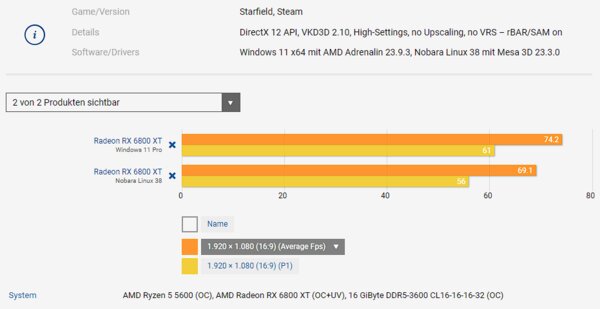

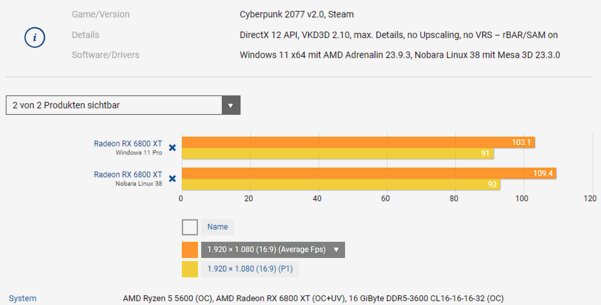
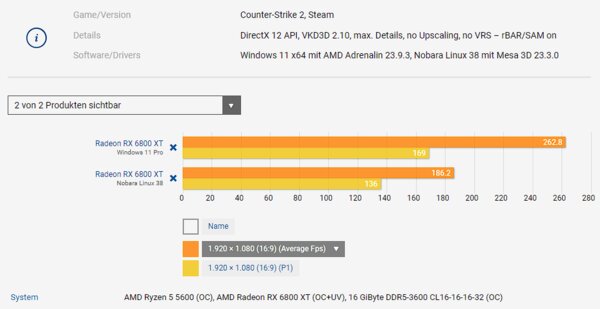
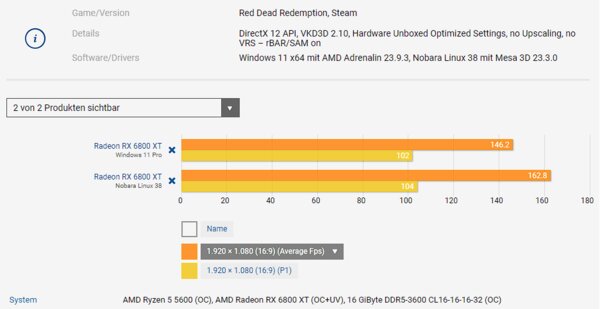
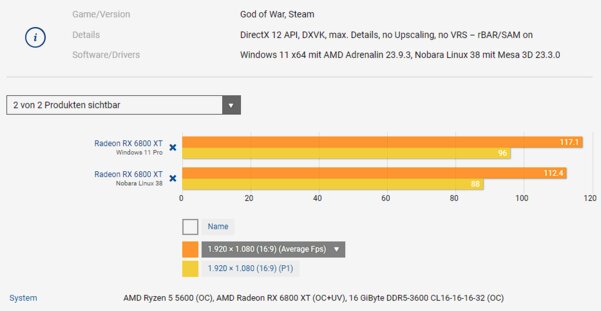
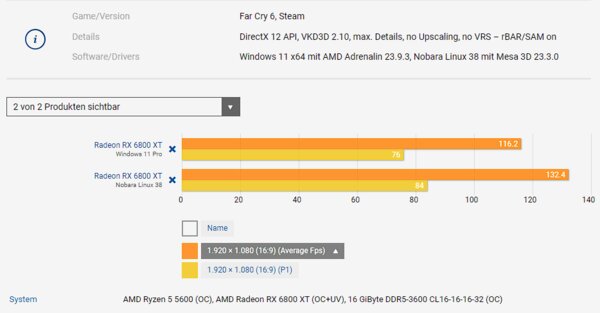
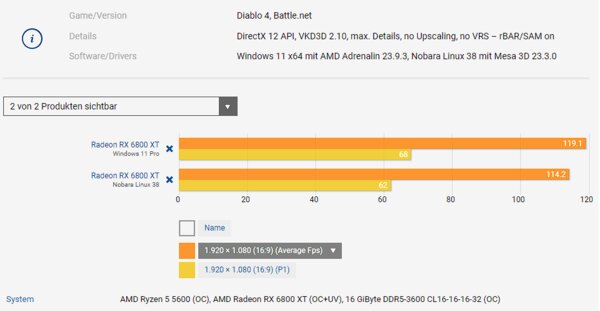
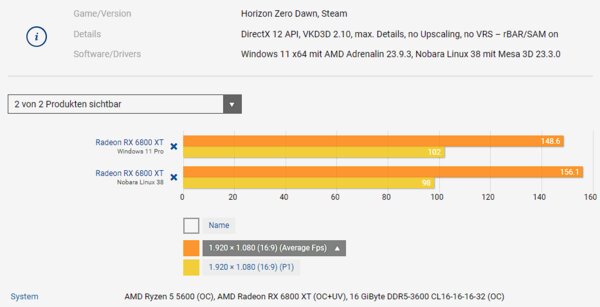
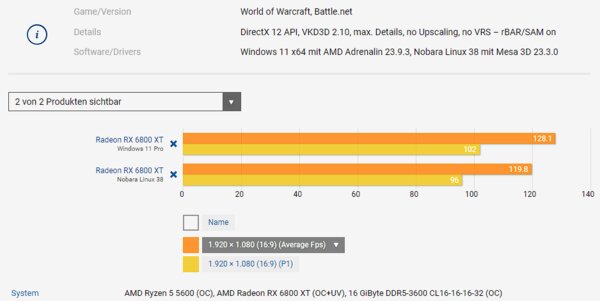
Вывод авторов эксперимента оказался таковым — благодаря усилиям команды Valve в отношении Steam, Steam Play, SteamOS и Proton, операционная система Linux с каждым годом становится всё более равноценной альтернативой Windows.
I often find myself engaged in discussions about the merits of gaming on Linux versus Windows. With the growing popularity of Linux as a desktop operating system, many users are curious about its gaming capabilities compared to the longstanding dominance of Windows in the gaming arena.
In this article, I’ll provide an in-depth comparison of gaming on Linux and Windows, examining the potentials, challenges, and key differences between the two platforms.
Introduction to Gaming on Linux and Windows
Linux Gaming
Gaming on Linux has come a long way in recent years, thanks to initiatives like Steam Play, Proton, and the increasing compatibility of popular game engines with the platform.
Linux offers several gaming distributions (distros) tailored for gaming, such as Ubuntu GamePack, Pop!_OS, and SteamOS, which come pre-installed with gaming-related software and drivers.
Windows Gaming
Windows has long been the dominant platform for gaming, thanks to its extensive library of games, robust DirectX support, and widespread compatibility with gaming hardware and peripherals.
With the release of Windows 10, Microsoft has made significant strides in improving gaming performance and compatibility, further solidifying its position as the go-to platform for gamers.
Performance and Compatibility
Linux
Linux gaming performance has improved significantly in recent years, thanks to advancements in graphics drivers, compatibility layers, and gaming-focused optimizations.
While some games may run slightly slower on Linux due to differences in graphics APIs (such as DirectX versus Vulkan), many games perform comparably to their Windows counterparts, especially with the help of tools like Proton and Wine.
Windows
Windows boasts excellent gaming performance and compatibility, thanks to its widespread adoption in the gaming industry and robust support for DirectX. Most games are developed with Windows in mind, optimized for DirectX, and thoroughly tested on the platform.
As a result, Windows often provides the smoothest gaming experience, with better support for cutting-edge graphics technologies and hardware.
Game Library and Availability
Linux
While Linux’s game library has grown significantly in recent years, it still lags behind Windows in terms of sheer volume and variety. Many popular titles are available on Linux through platforms like Steam and GOG, with native Linux versions or compatibility through Proton and other compatibility layers.
However, some games remain exclusive to Windows due to platform-specific dependencies or lack of developer support.
Windows
Windows boasts the largest and most diverse game library of any platform, with thousands of titles available across various genres and categories.
From blockbuster AAA titles to indie gems, Windows users have access to a vast selection of games through platforms like Steam, Epic Games Store, and Microsoft Store.
Additionally, Windows offers robust backward compatibility, allowing users to play older games seamlessly.
Also read — Open-Source PDF Editors for Everyone: A Linux Expert’s Guide
Ease of Use and Accessibility
Linux
Linux gaming can be more challenging to set up and configure compared to Windows, especially for users unfamiliar with the platform. While gaming-focused distributions and tools like Lutris and PlayOnLinux have simplified the process of installing and running games on Linux, some technical knowledge may still be required to troubleshoot issues and optimize performance.
Windows
Windows is known for its user-friendly interface and intuitive gaming experience. Most games are designed to run seamlessly on Windows, with straightforward installation and configuration processes.
Windows also offers comprehensive driver support for gaming hardware and peripherals, making it easy for users to plug and play their favorite games without hassle.
Potential Challenges and Considerations
-
Hardware Compatibility: While Linux supports a wide range of hardware configurations, compatibility issues may arise with certain graphics cards, peripherals, or proprietary hardware.
-
Driver Support: Graphics driver support on Linux can vary depending on the manufacturer, with some vendors offering better support and performance than others.
-
Game Compatibility: Not all games are compatible with Linux, especially older or niche titles that rely on proprietary technologies or Windows-specific APIs.
-
Community and Support: While the Linux gaming community is active and supportive, finding solutions to technical issues or troubleshooting compatibility problems may require more effort compared to Windows.
Conclusion
In conclusion, both Linux and Windows offer unique advantages and challenges when it comes to gaming. While Windows remains the dominant platform for gaming due to its extensive game library, performance, and ease of use, Linux has made significant strides in recent years, providing a viable alternative for gaming enthusiasts.
Ultimately, the choice between gaming on Linux and Windows depends on your preferences, priorities, and technical proficiency. If you value freedom, open-source software, and community-driven development, Linux may be the ideal choice for you.
However, if you prioritize access to the latest games, compatibility, and ease of use, Windows may be the more suitable option.
Regardless of your choice, both Linux and Windows offer compelling gaming experiences, with a wealth of games to explore and enjoy. Whether you’re a casual gamer or a hardcore enthusiast, there’s never been a better time to dive into the world of gaming on Linux and Windows.
See you in the next guide.
Правда, протестировано было только 5 игр и только на одной конфигурации железа, так что для других игр и железа результаты могут отличаться.
Перевод полного текста статьи можно посмотреть здесь:
Тестировались игры Cyberpunk 2077, Forspoken, Ratchet & Clank: Rift Apart, Starfield, The Talos Principle II на системе с AMD Ryzen 7 5800X и RX 6700 XT.
При этом, во всех этих играх, кроме Ratchet & Clank, в Linux (через Steam Proton) наблюдался более высокий средний показатель FPS, чем в Windows 11. В трех играх из этих пяти (исключая The Talos Principle II и Ratchet & Clank) Linux лидирует также по показателю 1%-low, а не только по среднему FPS.
Конечно, результаты тестирования на таком маленьком наборе игр и всего лишь на одной конфигурации железа не являются ни в каком смысле репрезентативными, но, тем не менее, эти результаты вполне можно считать одним из указаний на то, что Linux становится вполне подходящей ОС для геймеров.
The conversation around gaming on Linux has changed significantly during the last several years. It’s a success story engineered by passionate developers working on the Linux kernel and the open-source graphics stack (and certainly bolstered by the Steam Deck). Many of them are employed by Valve and Red Hat. Many are enthusiasts volunteering their time to ensure Linux gaming continues to improve. Don’t worry, this isn’t going to be a history lesson, but it’s an appropriate way to introduce yet another performance victory Linux is claiming over Windows.
I recently spent some time with the Framework 13 laptop, evaluating it with the new Intel Core Ultra 7 processor and the AMD Ryzen 7 7480U. It felt like the perfect opportunity to test how a handful of games ran on Windows 11 and Fedora 40. I was genuinely surprised by the results!
Here are some notes about the Framework system and the overall testing environment.
The Framework 13 running Fedora 40. Pictured laying flat to demonstrate its 180-degree hinge.
Jason Evangelho
The Framework 13 System:
- CPU: AMD Ryzen 7 7840U (with Radeon 780M Graphics)
- RAM: 32GB DDR5-5600
- OS #1: Windows 11 Home (version 22631.4037)
- OS #2: Fedora Linux 40 (kernel 6.10.4-200)
The Framework 13 is perfectly capable of gaming even with its integrated graphics, provided you’re willing to compromise by lowering the resolution and quality presets for more demanding games. (It’s also a testament to how far AMD’s APUs have come in the past decade.)
To give both operating systems equal footing, power profiles were set to “Performance” at all times. Crucially, I only captured results from the second run of each benchmark, as the first run can normally happen without any thermal throttling entering the picture.
On Fedora 40, I ran a system update before testing. No modified kernels were used. No custom versions of Proton (such as Proton-GE) were used. No bleeding edge graphics drivers were used — just what’s included in the kernel that ships with Fedora 40.
On Windows 11, I did a system update and upgraded the Radeon 780M driver to version 24.7.1, since Framework’s driver bundle had a slightly older version at the time of testing.
OK! Let’s kick things off with two games that have native versions for both Windows and Linux.
Shadow of the Tomb Raider
Shadow of the Tomb Raider’s native version: Windows vs Linux
Jason Evangelho
It could be argued that this isn’t a fair fight despite both OSes running their native versions of Lara Croft’s 2018 adventure. Linux is rocking the Vulkan API, and Windows is utilizing DX12. However, it does show both operating systems playing to their strengths. Indeed, Fedora 40 pulls off 7% higher average framerates.
Total War: Warhammer III
Total War: Warhammer III does battles its native version on Windows and Linux.
Jason Evangelho
In this native versus native matchup using Warhammer III’s Battle benchmark, it’s Vulkan on Linux against DX11 on Windows. The tiny performance gap is pretty much down to the game’s run-to-run variance, but technically the win goes to Windows.
Cyberpunk 2077
Cyberpunk 2077 FPS comparison on Windows 11 vs Fedora 40
Jason Evangelho
This is what surprised me, because now we’re entering Proton territory. As you may know, Proton is the Valve-developed compatibility layer that allows Windows games to be “translated” to run on Linux. It’s a fundamental building block for Steam Deck, and the breadth of games playable on Linux wouldn’t be remotely possible without it.
But there’s an inherent performance penalty whenever you try to run software on an OS it wasn’t designed for, and historically we’ve seen that happen with Proton games. The compromise being that yes, you can play it on Linux, but you’ll see anywhere from a 5% to 30% performance hit.
That’s what makes both of these Cyberpunk 2077 results so interesting. Without FSR scaling enabled, Fedora 40 eeks out a 3% performance advantage. Considering the above info, that’s quite a victory in my book.
Cyberpunk 2077 FPS comparison on Windows 11 vs Fedora 40, with FSR Balanced
Jason Evangelho
And wow, things look even brighter when utilizing AMD FSR! Bumping up the graphics from Low to Medium and switching on FSR “Balanced,” Fedora 40 pulls away a bit more, turning in 7% higher average FPS and, crucially, a 24% higher minimum framerate.
Forza Horizon 5
Forza Horizon 5 FPS comparison on Windows 11 vs Fedora 40 without dynamic resolution or image … More upscaling
Jason Evangelho
Yes, Windows wins here. But what’s notable is that when Forza Horizon 5 released in 2021, Linux gaming websites published celebratory headlines about the fact that it ran at all. Now, only three years later, this Microsoft-developed DirectX 12 game is performing admirably right out of the box (on Steam Deck, too). A 7% performance deficit with the overhead of running Proton? Things are improving, and improving quickly,
Another exciting takeaway is that holy cow, we now live in a world where a Linux laptop with integrated graphics can run a modern racing game above 60FPS at 1080p. I love living in that world.
These results are an interesting slice of the Linux vs Windows gaming picture, but certainly not representative of the entire landscape. A few shorts years ago, however, I never would have dreamed I’d be writing an article where even two games on Linux are outperforming their Windows counterparts.
That said, I want to run these same benchmarks on laptops with dedicated AMD and Nvidia GPUs and see what happens. If you’re interested in seeing those results, follow me here at Forbes or on Mastodon and I’ll keep you posted.
